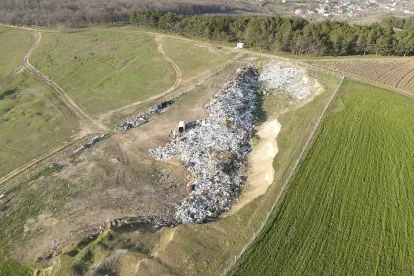On November 2, 2021, President Biden released the U.S. Methane Emissions Reduction Action Plan (the “Plan”). The Plan, calling for substantial reductions in U.S. methane emissions, was announced in tandem with an international agreement to tackle methane emissions, which took center stage during the second day of the Glasgow UN Climate Conference (COP26) this week. The domestic plan starts the ball rolling for a sweeping interagency initiative of upcoming rulemakings and regulations that would target multiple sources of methane emissions across the United States and incentivize further methane emission reduction through voluntary programs.
Key Takeaways
-
The Biden administration aims to update rules for existing oil and gas infrastructure and impose rules for new oil and gas infrastructure that would result in a 75% reduction in methane emissions from this sector. EPA Administrator Michael Regan has signed the proposed rules, and the 60-day public comment period will begin soon (following publication in the Federal Register). There also will be two days of public hearings.
-
The Plan would further target methane emissions from a number of sources, including landfills, agriculture, and other sources. Specifically, the Plan calls for:
-
Adopting an incentive-based system to reduce methane emissions from landfills with a federally-enforceable “backstop” limit on methane emissions, with the goal of reducing methane emissions from landfills by 70%.
-
Addressing methane emissions from agricultural sources through several programs aimed at creating a system of agriculture-based carbon sequestration, improving markets for low-carbon agricultural products, and capturing agricultural methane emissions to produce renewable energy. The United States Department of Agriculture (USDA) has already sought comment this year on some of these items.
-
Rolling out a number of initiatives to reduce methane emissions from industrial sources, primarily through education and incentives.
-
-
The Administration’s Plan will work in tandem with a commitment obtained at COP26 from 100 countries to reduce methane emissions.
-
Although its fate is still uncertain as of this writing, an additional mechanism to address methane emissions through a system of fees and rebates to fund emissions-reduction technologies may be included in the reconciliation bill that is currently making its way through Congress.
-
Because methane is a potent greenhouse gas (GHG), the Administration’s initiatives represent a significant step in meeting its goals of (i) achieving economy-wide net-zero GHG emissions by mid-century and (ii) achieving the 50-52% reduction in domestic GHG emissions by 2030 (from 2005 levels) that is contained in the United States’ Nationally Determined Contribution submitted under the Paris Agreement.
Pending Regulations & What’s Coming Next
While methane represents only about 10% of the nation’s total GHG emissions, methane produces a much greater greenhouse effect than carbon dioxide while it is in the atmosphere (although it is much more short-lived than carbon dioxide). Hence, addressing methane emissions, along with emissions of other potent GHGs like hydrofluorocarbons, plays an important role in the Biden Administration’s ambitious plans to address climate change.
Targeting Oil and Gas Methane Emissions
At the Plan’s core is a suite of proposed Environmental Protection Agency (EPA) regulations targeting methane emissions from the oil and natural gas sector under the Clean Air Act (CAA). The proposed rule includes more aggressive new source performance standards (NSPS) for the oil and gas industry, applicable to new, reconstructed, and modified sources within the sector.
Notably, the proposal also includes EPA’s first-ever emission guidelines for regulating methane emissions from existing oil and gas facilities. EPA proposed these emission guidelines under Section 111(d) of the CAA. The U.S. Supreme Court recently granted certiorari to review the scope of EPA’s authority under this same provision, albeit in the context of EPA’s efforts to regulate CO2 emissions from existing fossil-fired power plants.
In many cases, the proposed NSPS and emission guidelines are based on application of similar systems of emission reduction. Depending on the type of equipment or emission point, those “best systems of emission reduction” may include leak detection and repair at well sites and compressor stations, changing pneumatic controllers to zero-emissions technologies, the routing of associated gas from oil wells to sales lines, or many other measures. The proposed emission guidelines and NSPS target numerous types of equipment and emission points, including:
-
fugitive emissions from well sites and compressor stations;
-
storage vessels;
-
pneumatic controllers;
-
well liquids unloading operations;
-
reciprocating and centrifugal compressors;
-
pneumatic pumps;
-
equipment leaks at natural gas processing plants;
-
well completions;
-
oil wells with associated gas; and
-
sweetening units.
EPA estimates that these initiatives would reduce methane emissions by 41 million tons from 2023 to 2035. Further, EPA intends to develop a supplemental proposal in 2022 with additional methane and VOC emissions reduction measures in response to public feedback. EPA is specifically calling for information on other sources of pollution such as abandoned or unplugged wells, ways to involve community members in monitoring emissions, new monitoring technologies, and methods for documenting large emission events with industry stakeholders.
Other agencies will target methane emissions through separate rulemakings. For example, the Pipeline and Hazardous Materials Safety Administration (PHMSA) is working to finalize three rules over the coming months that will ultimately regulate more than 400,000 additional miles of pipeline: The Gas Gathering Pipeline Safety Rule would impose new safety requirements on previously unregulated pipelines; the Automatic Shut-off Valve Rule would require rupture mitigation valves on any new pipelines being constructed; and the Gas Transmission Pipelines Safety Rule includes a number of increased safety requirements to reduce leaks and ruptures. The Bureau of Land Management (BLM) will focus its efforts on venting and flaring on federal lands, with plans for a regulation under the Mineral Leasing Act that would require operators to pay royalties for venting and flaring events. In addition, BLM and the Bureau of Ocean Energy Management (BOEM) may require stronger financial assurances for oil and gas operators. Once the agencies publish the proposed rules, there will be an opportunity for public comment.
Finally, the Administration’s “Build Back Better” infrastructure package includes funding to reduce legacy sources of methane emissions. If enacted into law, it would allocate $4.7 billion for plugging abandoned oil and gas wells, and another $11.3 billion to remediate methane emissions from abandoned coal mines. These are all significant sources of methane emissions.
Reducing Methane Emissions from Landfills
Municipal solid waste (MSW) landfills are subject to CAA section 111(d) emission guidelines requiring states to develop methane controls, and authorizing EPA to step in if states fail to adequately act. In May 2021, EPA promulgated federal plans with methane limits for the approximately 1,600 existing MSW landfills not covered by state plans.
These existing programs will be supplemented by a Landfill Methane Outreach Program that will assist landfills, including smaller landfills not covered by the EPA rules, in capturing methane for energy projects. In addition, the Plan includes measures aimed at reducing food waste.
Reducing Agricultural Methane Emissions
The Plan includes several voluntary measures aimed at reducing methane emissions from agricultural operations. These are aimed at creating incentives for methane reduction, assisting in the capture of methane from manure management systems for energy production, improving measurement of methane emissions from agricultural operations, and promoting agriculture-based carbon sequestration. These will likely build on various initiatives under way at USDA to incentivize and promote GHG sequestration through agriculture and forestry.
Reducing Industrial Methane Emissions
The Plan includes initiatives to promote electrification of industrial processes and other voluntary measures to reduce industrial methane emissions. The Plan also includes a number of measures to address methane emissions from buildings by reducing natural gas leakages, improving the efficiency of HVAC systems, and encouraging conversion to non-emitting or low-emitting technologies like heat pumps.
The Global Methane Pledge
As part of its efforts to promote global commitments to addressing climate change, the Administration issued a detailed Long-Term Strategy setting forth its plans for achieving net-zero GHG emissions in the U.S. by mid-century. Notably, reductions in methane emissions are a major building block for this plan.
The Administration’s effort to leverage international commitments to methane reduction is embodied in the Global Methane Pledge: a pledge to reduce methane emissions 30% by 2030 from 2020 levels. First announced in September 2021, this joint effort by the United States and the European Union officially launched during the first week of COP26. More than 100 countries have now signed the Global Methane Pledge.
The Administration’s Methane Emissions Reduction Action Plan launches significant new regulatory initiatives aimed at substantially reducing methane emissions, especially from the oil and gas sector. The Plan aims to reduce methane emissions from other sectors of the economy through a combination of existing regulatory initiatives and new voluntary programs aimed at, for example, capturing methane for the production of renewable electricity or renewable natural gas. These initiatives are likely to create both substantial regulatory burdens for affected industries along with significant new economic opportunities in some sectors.
Co-authored by Mary Crowell








 />i
/>i
